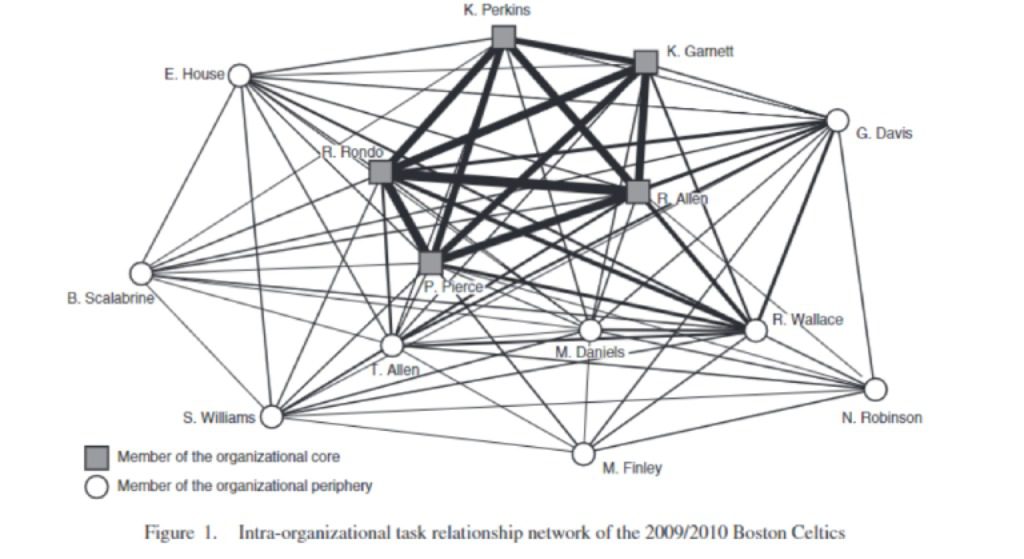
IESE Insight
Ball don't lie: Making a case for core stability
How do winning sports teams inform the strategic management of human resources in business? Four practical tips for managers to stabilize work relationships.
Soccer fans: Real Madrid or Atlético Madrid?
Basketball fans: Lakers or Celtics?
IESE's Massimo Maoret argues that these are not simply questions of sport allegiances, but rather fundamental strategic dilemmas faced by every firm.
"These teams strategize about their human resource management in very different ways," Maoret says.
Human resources are arguably the most overlooked aspect in business strategy nowadays, but they can be the key to unlock competitive advantage.
Take the comparison between Madrid's two winning teams. Their staffing decisions highlight a fundamental tradeoff between stability and change. Stable working relationships form the building blocks of social capital — a resource embedded in firms' networks that breeds efficient routines, trust and cognitive alignment. Social capital is found in abundance on Atlético's winning team.
On the other hand, firms often face the dilemma of breaking up relationships to bring in new talent, what economists call human capital. Real Madrid is known for its human capital, i.e., the field's superstars. A dilemma thus follows: Should I improve my firm's talent pool but sacrifice the stability of its internal network? Or should I pass on the new star to keep the core of my team intact?
An article in the Strategic Management Journal, by Fabio Fonti of ESC Rennes School of Business and Maoret, aims to inform this dilemma. And to do so, the co-authors took it to the basketball floor.
Human and social capital: an odd couple
While previous studies have found social capital important to software developers and surgeons, Fonti and Maoret looked at the National Basketball Association (NBA) in the United States for their research. Much like firms that compete in markets, they found highly interdependent coworkers aiming to shoot, score and win.
"To better understand the interplays between human and social capital, talent and networks, we needed to find an empirical setting that allowed us to answer a set of important questions," Maoret explains. "First, is human or social capital more important for performance? Second, how does social capital impact performance? And third, when are these two forms of capital rivals, and when are they mutually reinforcing?"
The authors found that, on average, social capital is as important as human capital for determining performance. However, not only are stable working relationships — the building blocks of social capital — important in and of themselves, but the positions of these relationships in a social network also matter to organizational performance.
For a more nuanced view of social capital at work, the coauthors insist that not all relationships are the same: there are core and peripheral players in an organization's social networks. "Organizational cores are where highly interdependent activities occur — for instance, your R&D units," Maoret explains.
On the basketball court, the co-authors find clear examples of core and peripheral players. And they also find the NBA has a trove of team data. Specifically, they look at 48 years of statistics on wins, scores, passes and blocks for the world's most competitive basketball league.
In Fonti and Maoret's study, core and peripheral positions in a social network were determined by how much time players interacted together on the court. Based on this principle, the internal collaboration network of the 2009/10 Boston Celtics looked like this:

Three (or four) pointers for managers
The NBA data were analyzed to help determine if social capital matters more at the core than it does at the periphery, controlling for certain variables. The basic answer is yes, but with diminishing returns over time.
In other words, relational stability among core players has an immediate, strong impact on performance, but such an effect then plateaus quite quickly. Perhaps that is because the competition is able to study the core players and adjust their own strategies accordingly.
The co-authors also analyze how human capital (players' individual talent) interacts with social capital and its location. Here, looking at the periphery, the study finds that social capital with peripheral teammates can actually hinder the positive effect that human capital brings to performance.
Yet, overall, "stable work relationships among employees generate trust, more efficient work routines, common understanding and thus higher organizational performance," the co-authors summarize, validating results found in previous research.
In the "managerial implications" of this research, executives can find tips for strategic human resource management that may be especially relevant to highly interdependent workplaces.
- Create structural stability. Focus on creating the conditions for stability by giving employees time to get to know and to adjust to each other. To this end, tolerate short-term inefficiencies of new hires with an eye to long-term results.
- Avoid temporary workers when possible. While offering short-term, non-guaranteed contracts can allow managers to adjust more quickly to demand fluctuations, the practice undermines the accumulation of social capital.
- "The war for talent" can generate underwhelming results. Poaching a field's top stars might not be the best solution if done at the expense of team stability, when social capital is lost.
- Pay more attention to the location of social capital. In hiring decisions, as in real estate, location matters. "Hiring talented core employees is particularly beneficial when social capital is also present in the organizational core, while benefits might be offset by the presence of stable ties outside it," the co-authors explain.
In the end, NBA play can help managers realize that social capital plays a complex role — on the court and off it. And the showdown between Real Madrid's human capital and Atlético's social capital may yield even more food for thought for strategic management.
